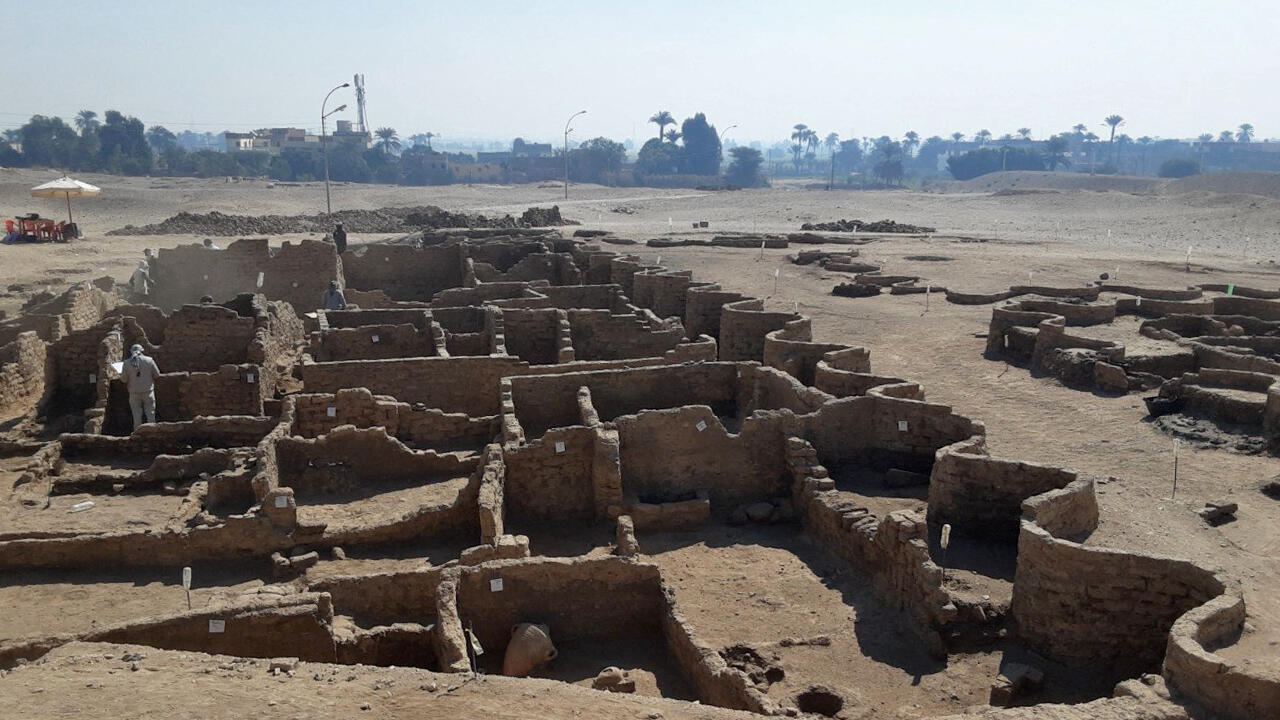An Egyptian archaeological mission has discovered the "largest ancient city in Egypt", dating back more than 3,000 years, near Luxor, in the south of the country, its director, the former Minister of Antiquities and archaeologist Zahi Hawass.
"The archaeological mission (...) discovered a buried city (...) which dates from the reign of King Amenhotep III and which continued to be used by King Tutankhâmon, that is to say 3,000 years ago", affirms the mission in a press release.
Arrived on the throne in 1391 before our era, Amenhotep III died in -1353. Objects, including jewels and pottery bearing his seal, have been discovered in the city, thus confirming the dating, it is specified.
It is "the largest ancient city in Egypt", according to Zahi Hawass, quoted in the press release.
"Second most important discovery since the tomb of Tutankhamun"
The mission began its excavations in September 2020 between the temples of Ramses III and Amenhotep III near Luxor, about 500 km south of Cairo.
"Within a few weeks, to the team's surprise, clay brick formations began to appear," the statement said.
And the site is "in a good state of preservation, with almost entire walls and rooms full of tools of daily life".
"The discovery of this lost city is the second most important archaeological discovery since the tomb of Tutankhamun," said Betsy Brian, professor of Egyptology at Johns Hopkins University in the United States, also quoted in the statement.
It will notably allow "to offer us a rare glimpse of the life of the ancient Egyptians during the most prosperous hours of the (New) Empire".
Palace, bakery and animal graves
The city is made up of "three royal palaces (...) as well as the administrative and manufacturing center of the Empire".
But archaeologists have also unearthed a "food preparation area" with a "bakery", an "administrative district" and a construction "workshop".
Two burials of "cows or bulls" as well as an "unusual" human body were also discovered.
After years of political instability linked to the popular revolt of 2011, which dealt a severe blow to the key tourism sector, Egypt is seeking to bring back visitors, in particular by promoting its ancient heritage.
Last week, 22 floats carrying mummies of ancient Egyptian kings and queens passed through Cairo in a spectacular parade to reach the National Museum of Egyptian Civilization (NMEC), the new home of these royal remains.
With AFP
The summary of the week
France 24 invites you to come back to the news that marked the week
I subscribe
Take international news everywhere with you!
Download the France 24 application
google-play-badge_FR

